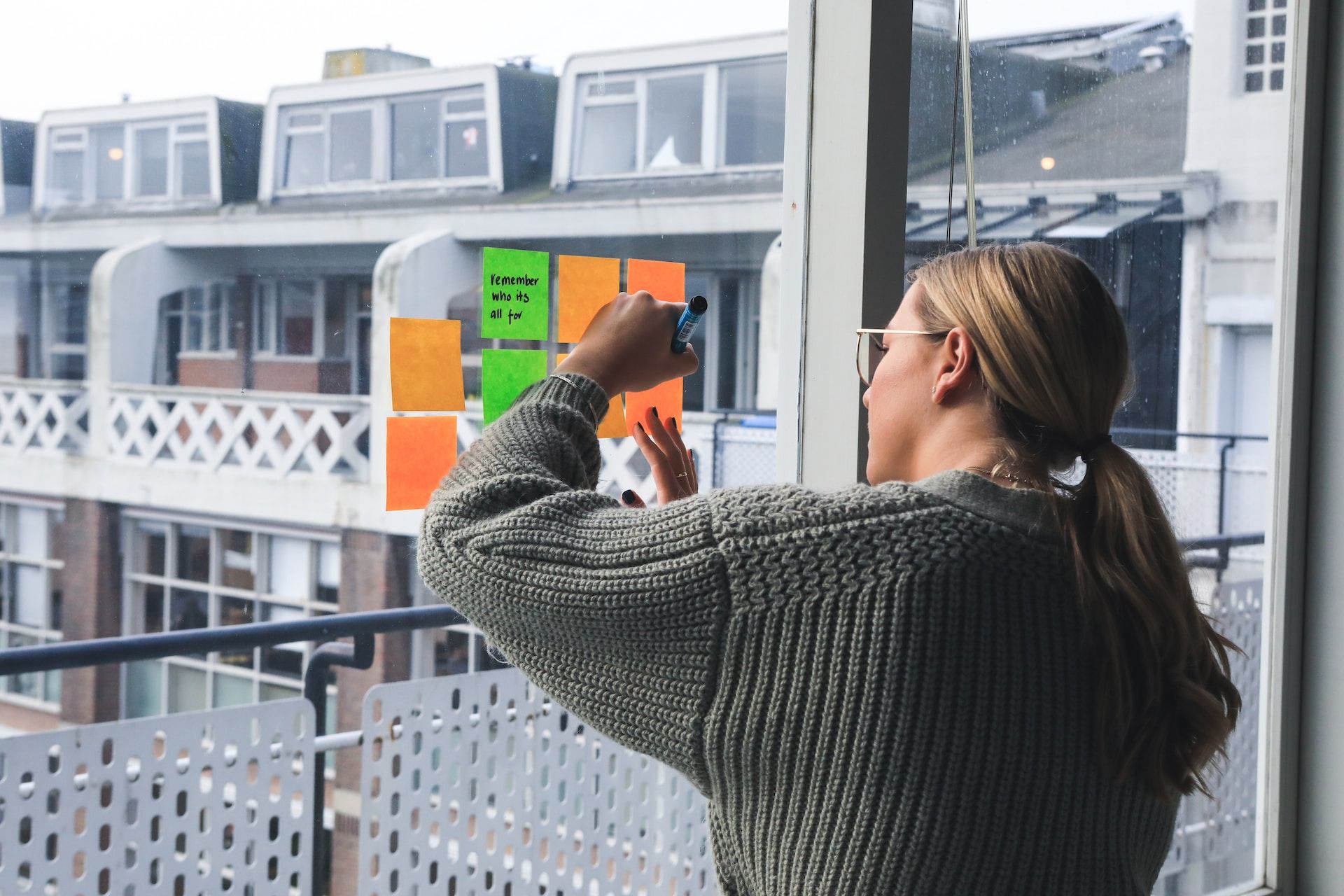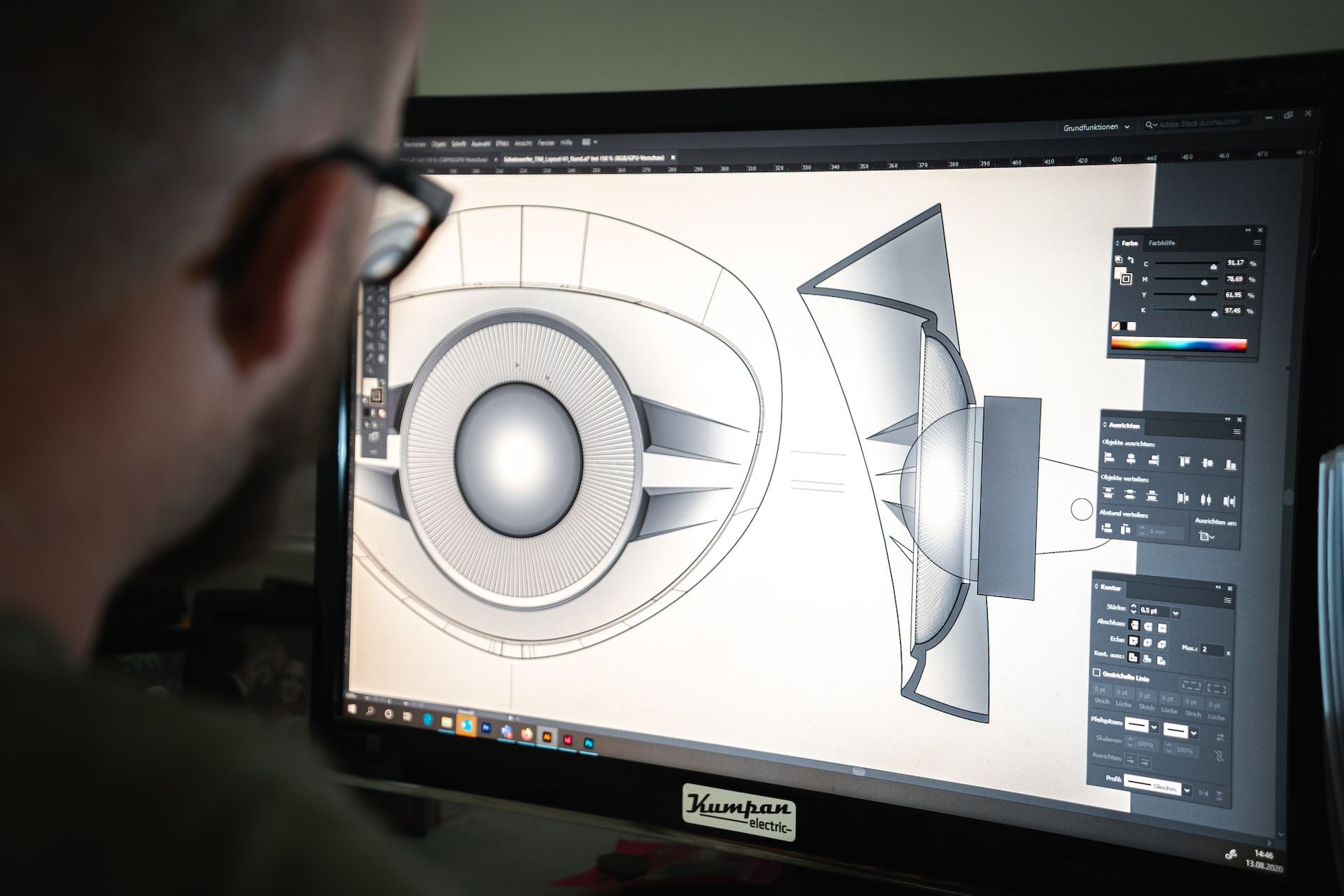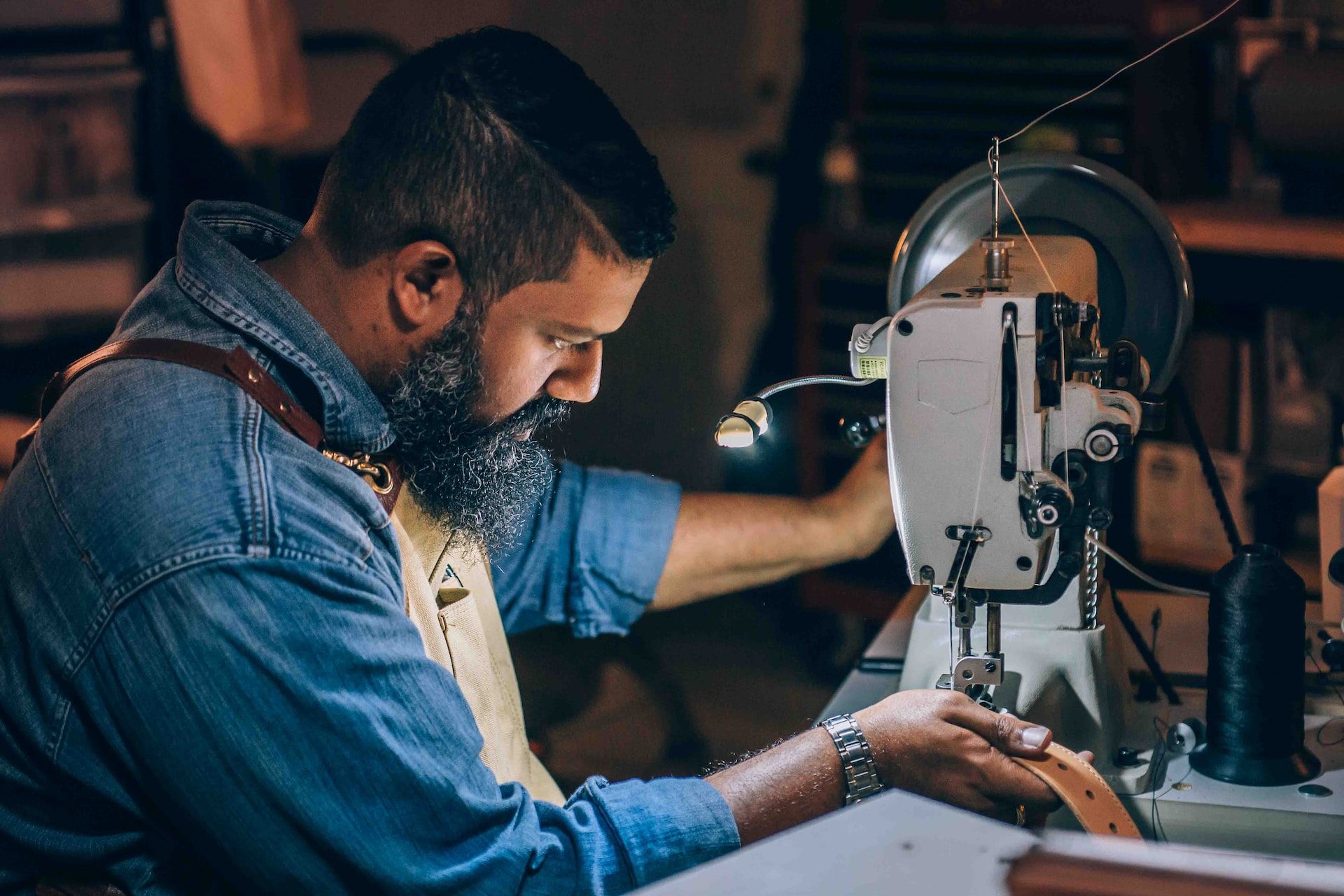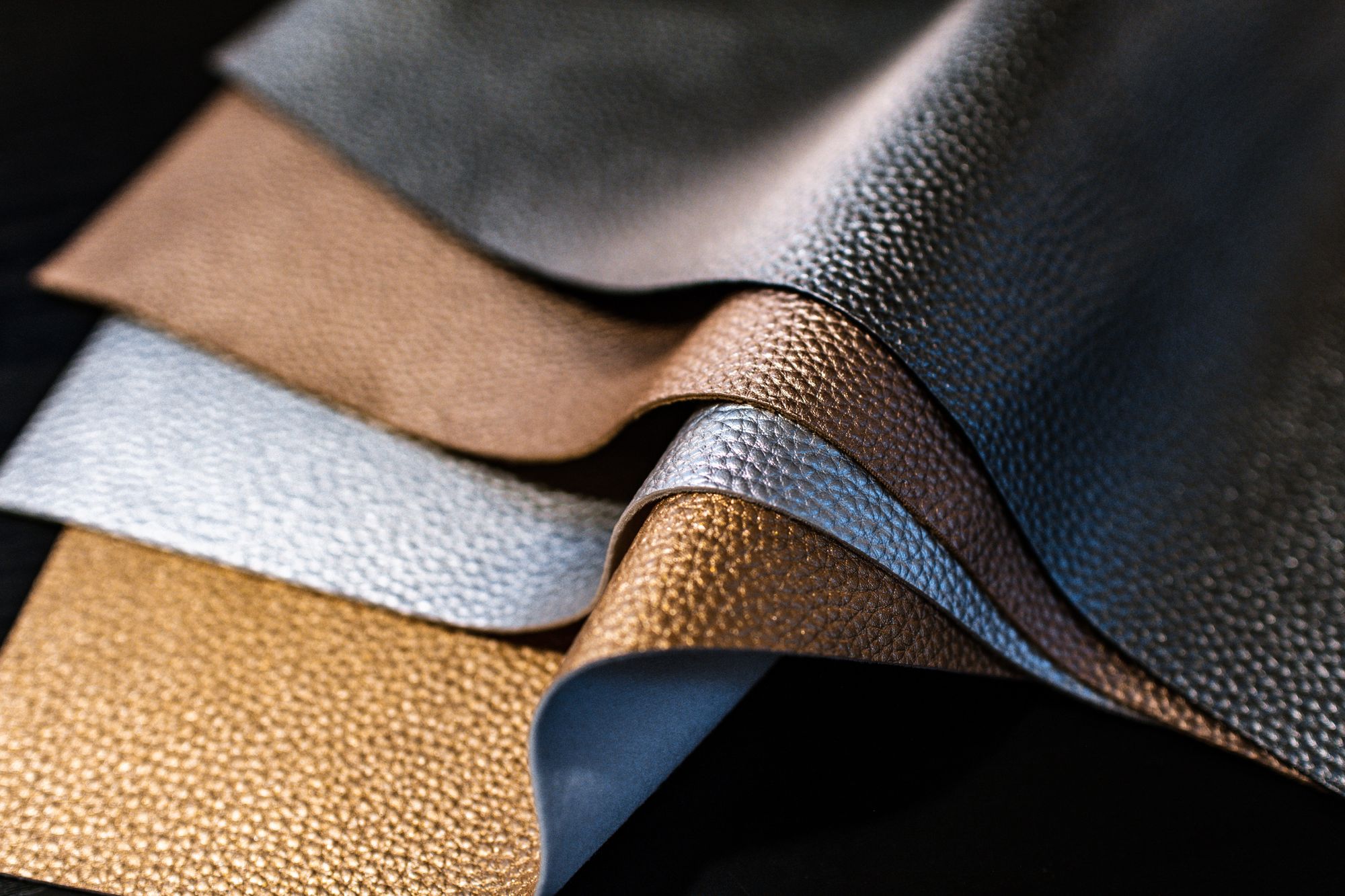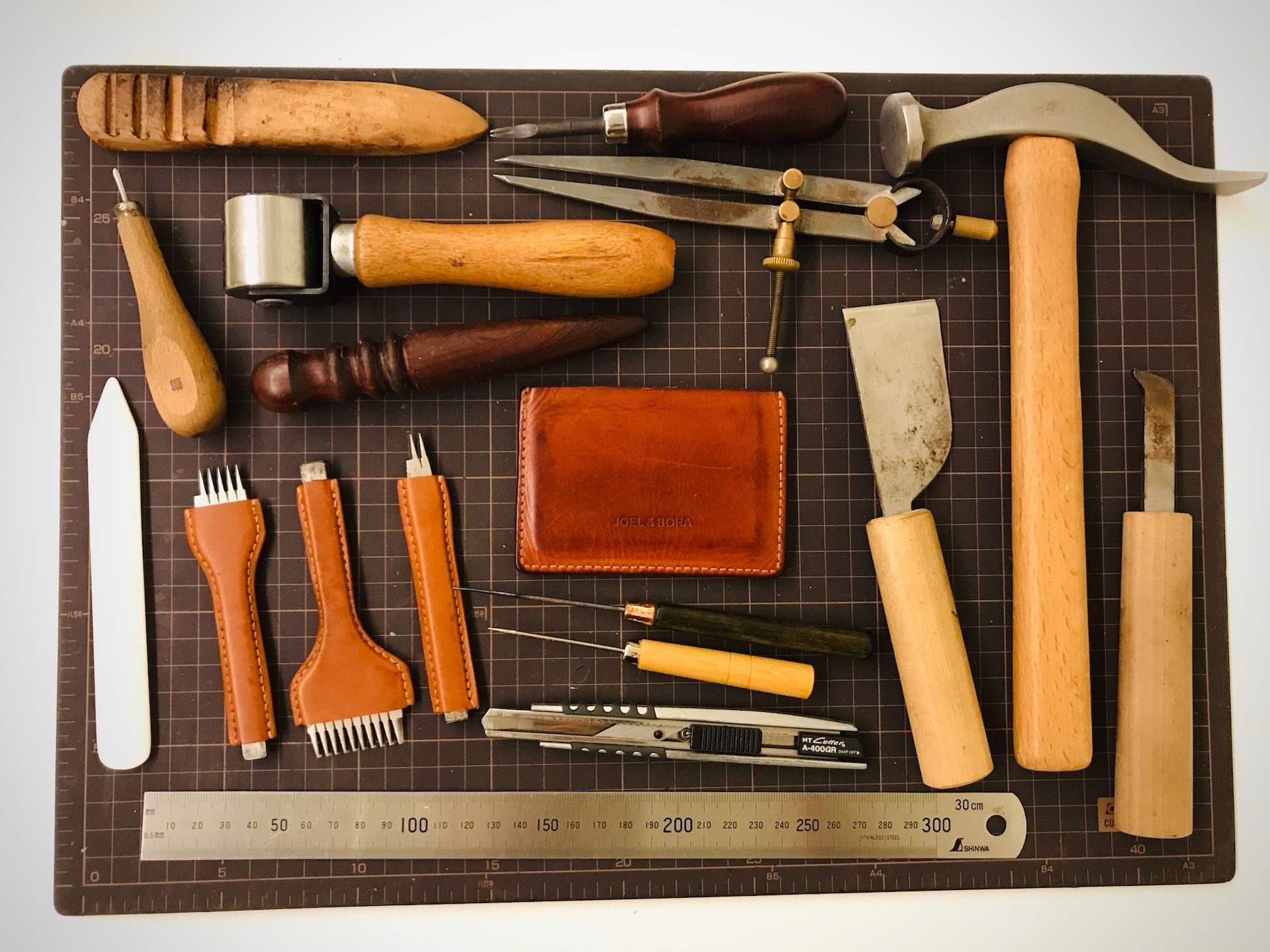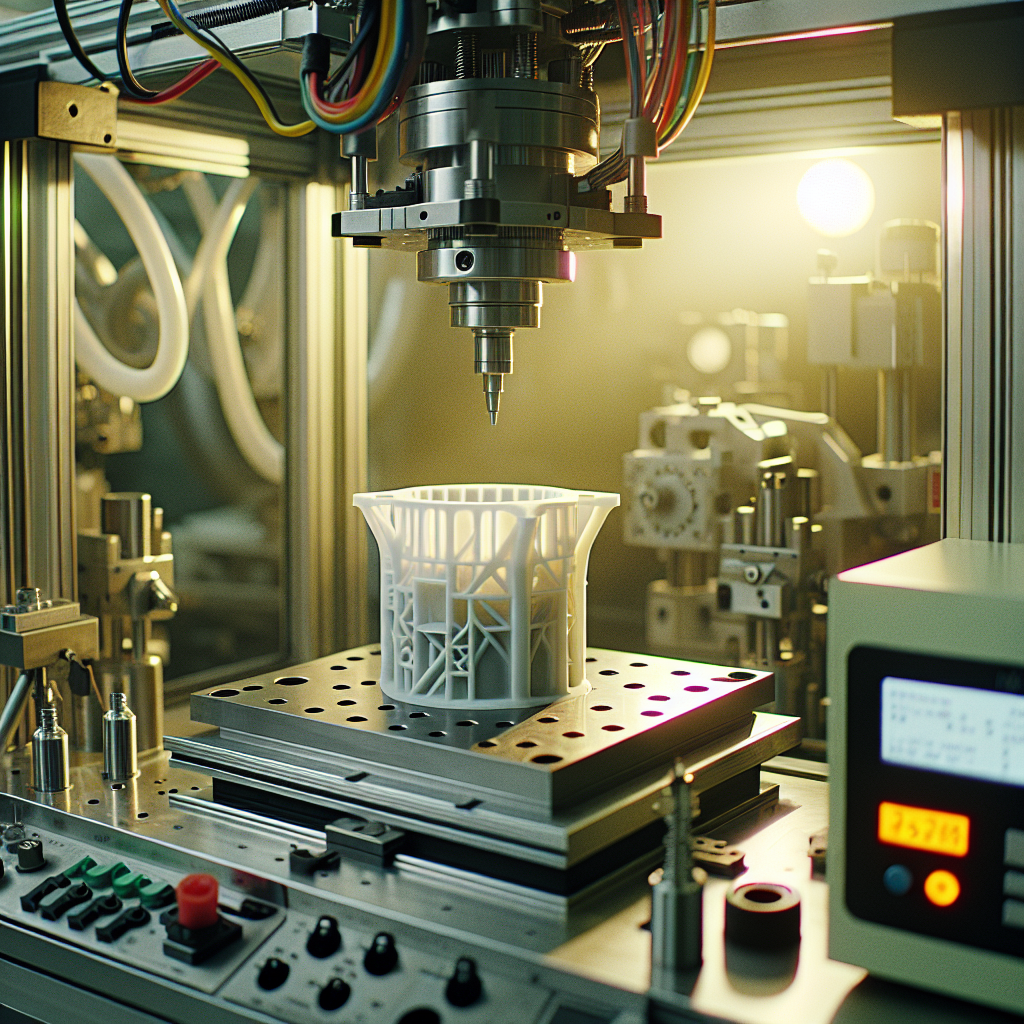Leather manufacturing has been a major industry for centuries, providing a wide range of products from clothing and accessories to upholstery and furniture. However, the environmental impact of leather production has become a growing concern in recent years, with high water and chemical usage and waste generation.
To promote sustainability and environmental responsibility in the leather industry, recycling has emerged as a critical solution. By recycling leather waste, manufacturers can reduce waste, conserve resources, and minimize environmental impact.
In this article, we will explore the importance of recycling in leather manufacturing. Let's take a look at the table of content that we'll cover in this guide:
- Leather Manufacturing: An Overview
- Recycling in Leather Manufacturing
- Importance of Recycling in Leather Manufacturing
- Environmental Impact of Leather Manufacturing
- Types of Leather Waste that can be Recycled
- Methods of Recycling Leather Waste
- Challenges of Recycling in Leather Manufacturing
- Solutions to these Challenges of Recycling in Leather Manufacturing
- Future Outlook for Recycling in Leather Manufacturing
- Wrapping Up
- How Deskera Can Assist You?
Let's get started!
Leather Manufacturing: An Overview
Leather manufacturing is an ancient craft that has been practiced for thousands of years, dating back to the earliest civilizations. Today, the leather industry is a global business, with production centers located in many countries around the world.
The manufacturing process involves the transformation of raw animal hides and skins into finished leather products, such as shoes, handbags, jackets, and furniture.
The process of leather manufacturing is complex and involves several stages, including pre-treatment, tanning, coloring, and finishing.
The pre-treatment stage involves the removal of hair, flesh, and other impurities from the hides and skins. The tanning process follows, which is the most critical stage of leather manufacturing. Tanning is the process of treating the hides and skins with chemicals to convert them into a durable and long-lasting material. Once the leather has been tanned, it undergoes the coloring stage, where it is dyed to achieve the desired color.
The final stage of leather manufacturing is finishing, where the leather is treated with chemicals to improve its texture, appearance, and durability. However, leather manufacturing can have significant environmental impacts due to the large amounts of water and chemicals used in the process, as well as the generation of waste materials such as scraps and shavings.
Therefore, it is essential to prioritize sustainable practices, including recycling, to reduce the environmental impact of the industry.
The importance of recycling in leather manufacturing cannot be overstated, as it can significantly reduce waste generation, conserve resources, and lead to economic benefits.
Recycling in Leather Manufacturing
Recycling in leather manufacturing refers to the process of collecting and reusing waste materials generated during the production of leather goods. This waste can come in the form of leather scraps, shavings, and dust.
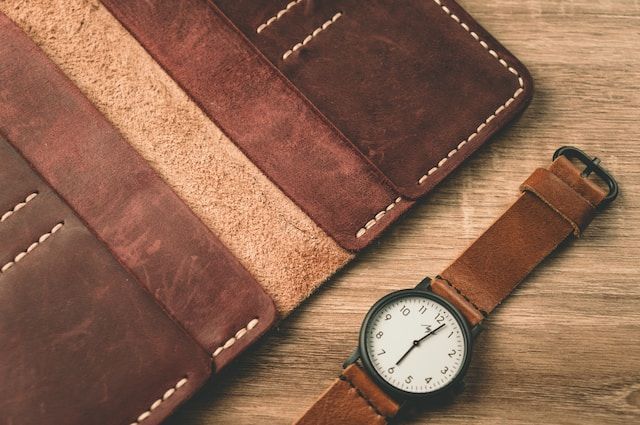
However, instead of discarding these materials, they can be processed and repurposed to create new products, reducing waste and conserving resources. Recycling in leather manufacturing is a crucial step towards creating a more sustainable and environmentally friendly industry.
Importance of Recycling in Leather Manufacturing
The importance of recycling in leather manufacturing cannot be overstated. Recycling is a crucial step towards creating a more sustainable and environmentally friendly industry.
The following are some of the reasons why recycling is essential in leather manufacturing:
Reduction in Waste Generation:
Leather manufacturing generates a significant amount of waste, including scraps, shavings, and dust. Recycling these waste materials reduces the amount of waste that is sent to landfills, which can have a significant environmental impact. Recycling also reduces the need for raw materials, which can help conserve natural resources.
Conservation of Resources:
The leather industry is a resource-intensive industry that uses significant amounts of water, energy, and chemicals. By recycling waste materials, the industry can reduce its reliance on these resources and conserve them for future generations. Additionally, recycling can reduce the need for virgin materials, which can help preserve natural habitats.
Economic Benefits:
Recycling waste materials can lead to economic benefits for leather manufacturers. Recycling can reduce the cost of raw materials and can also generate additional revenue streams by selling recycled materials.
Environmental Impact:
Leather manufacturing has a significant environmental impact, including water and air pollution, deforestation, and greenhouse gas emissions. Recycling waste materials can help reduce the environmental impact of the industry by reducing waste generation, conserving resources, and reducing the need for virgin materials.
Ultimately, recycling is a critical step towards creating a more sustainable and environmentally friendly leather industry. By reducing waste generation, conserving resources, and generating economic benefits, recycling can help create a more circular and sustainable industry.
Environmental Impact of Leather Manufacturing
Leather manufacturing is an industry that has significant environmental impacts, including water and air pollution, deforestation, and greenhouse gas emissions. The production process involves the use of large amounts of water, energy, and chemicals, which can have adverse effects on the environment.
Additionally, leather manufacturing generates significant amounts of waste, including scraps, shavings, and dust, which can contain chemicals and other pollutants.
Therefore, it is essential to prioritize sustainable practices, including recycling, reducing water and chemical usage, and reducing waste generation, to minimize the environmental impact of the industry.
A. Water Usage
Water usage is a significant environmental concern in leather manufacturing. The industry is estimated to consume approximately 22,000 liters of water per ton of leather produced, which is significantly higher than other industries.
The water is used throughout the production process, from cleaning and soaking the hides and skins to rinsing chemicals during the tanning process and washing finished leather products.
One of the primary concerns with water usage in the leather industry is water pollution. The water used in leather production is often contaminated with chemicals, pollutants, and other waste materials, which can have adverse effects on water sources and wildlife. The polluted water can also harm the health of local communities, as contaminated water can lead to the spread of waterborne diseases.
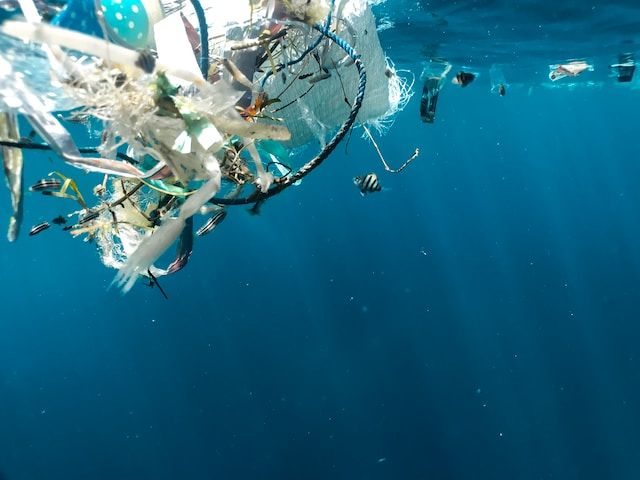
Another concern with water usage in leather manufacturing is water scarcity. The large amounts of water used in the industry can deplete local water sources, leading to water shortages and droughts. This can have significant impacts on communities that rely on these water sources for drinking, agriculture, and other activities.
To address these concerns, the leather industry must prioritize sustainable water management practices. This can include reducing water usage through process optimization and implementing water-saving technologies.
Additionally, the industry can work to reduce water pollution by implementing wastewater treatment systems and reducing the use of chemicals that can contaminate water sources.
Overall, water usage is a critical environmental concern in leather manufacturing, and the industry must prioritize sustainable water management practices to minimize its impact on water sources and wildlife.
B. Chemical Usage
Chemical usage is a significant environmental concern in leather manufacturing. Chemicals are used throughout the production process, from converting raw hides and skins into leather during the tanning process to finishing the leather products.
The most significant use of chemicals is during the tanning process, where chemicals are used to stabilize the collagen fibers in the hides and skins and to prevent them from decomposing.
The use of chemicals in leather manufacturing can have adverse effects on human health and the environment. Tanning chemicals can include chromium, formaldehyde, and other toxic chemicals that can be harmful to workers and nearby communities. Additionally, these chemicals can also pollute water sources and harm wildlife, leading to environmental damage.
To address these concerns, the leather industry must prioritize the use of safer, more sustainable chemicals. This can include implementing alternative tanning methods, such as vegetable or eco-tanning, that use natural materials and have fewer environmental impacts. The industry can also work to reduce the use of hazardous chemicals and implement safer chemical management practices.
Overall, the use of chemicals in leather manufacturing is a critical environmental concern, and the industry must prioritize sustainable chemical management practices to minimize its impact on human health and the environment.
C. Waste Generation
Waste generation is a significant environmental concern in leather manufacturing. The production process generates significant amounts of waste, including scraps, shavings, and dust. These waste materials can contain chemicals and other pollutants, which can have adverse effects on the environment if not properly managed.
One of the primary concerns with waste generation in leather manufacturing is the disposal of waste materials. Waste materials are often sent to landfills, where they can take years to decompose, leading to greenhouse gas emissions and other environmental impacts.
Additionally, waste materials can also lead to habitat destruction and wildlife disruption, as they can be attractive to scavenging animals.
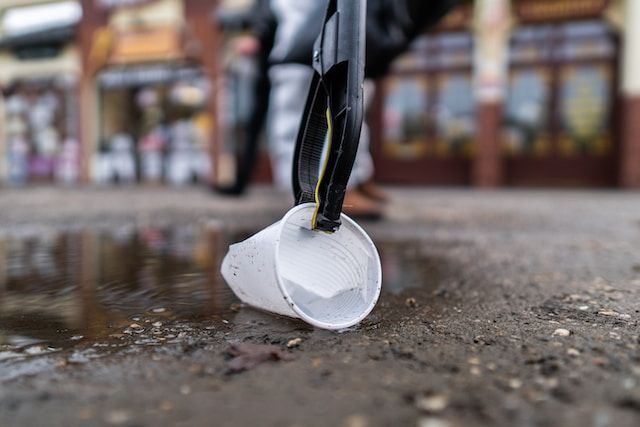
To address these concerns, the leather industry must prioritize sustainable waste management practices. This can include implementing recycling programs to reduce waste generation and reusing waste materials in other industries. The industry can also work to reduce the use of hazardous chemicals in the production process, which can lead to the generation of less toxic waste materials.
Overall, waste generation is a critical environmental concern in leather manufacturing, and the industry must prioritize sustainable waste management practices to minimize its impact on the environment.
Types of Leather Waste that can be Recycled
The leather industry generates a significant amount of waste during the manufacturing process. However, much of this waste can be recycled and repurposed, reducing the environmental impact of the industry.
There are several types of leather waste that can be recycled, including scraps and offcuts, shavings and trimmings, and dust. By recycling these materials, the leather industry can reduce waste generation, conserve resources, and minimize its impact on the environment.
Let’s discuss them in detail:
1. Leather Scraps
Leather scraps are one of the most common types of leather waste generated during the manufacturing process. They are the leftover pieces of leather that are too small to use in the production of finished products, but still have value and can be recycled.
There are several ways to recycle leather scraps, depending on their size and condition. One option is to repurpose them into smaller leather goods, such as wallets, keychains, and bookmarks. These products can be sold as low-cost items, providing a sustainable source of income for small-scale artisans.
Another option is to recycle leather scraps into new leather materials through a process called reconstituted leather. In this process, the leather scraps are ground into small pieces and mixed with a binding agent to create a new material that can be used in the production of finished products. This method reduces waste and conserves resources by utilizing existing materials and reducing the need for new leather production.
Overall, recycling leather scraps is an essential step towards sustainable leather production. It reduces waste generation, conserves resources, and provides economic opportunities for small-scale artisans. By embracing recycling and repurposing of leather scraps, the leather industry can become more environmentally and socially responsible.
2. Leather Shavings
Leather shavings are another common type of leather waste generated during the manufacturing process. They are the excess pieces of leather that are trimmed away during the production of finished products, such as shoes and handbags.
Recycling leather shavings can be done through a variety of processes. One method involves compressing the shavings into boards or sheets that can be used in the production of composite materials, such as leather particleboard. This material can be used in the manufacturing of furniture and other products.
Another method of recycling leather shavings involves converting them into a fine powder, which can be mixed with a binding agent to create a new material. This material can be used in the production of a range of finished products, such as flooring tiles, wall panels, and decorative objects.
Recycling leather shavings can have several benefits. Firstly, it reduces waste generation, which can help reduce the environmental impact of the leather industry.
Secondly, it conserves resources by utilizing existing materials and reducing the need for new leather production. Lastly, it creates economic opportunities for small-scale artisans who can use recycled leather shavings in their products.
Overall, recycling leather shavings is an important step towards sustainable leather production. It reduces waste generation, conserves resources, and creates economic opportunities. By embracing recycling and repurposing of leather shavings, the leather industry can become more environmentally and socially responsible.
3. Leather Dust
Leather dust is a byproduct of the manufacturing process and is generated when leather is cut and finished. It is a fine dust composed of small leather particles, and like other types of leather waste, it has the potential to be recycled and repurposed.
One method of recycling leather dust is to use it as an insulating material in the construction industry. The dust can be mixed with other materials, such as sawdust or shredded paper, to create a composite material that can be used as insulation in homes and other buildings. This helps reduce waste and the environmental impact of the leather industry while providing a sustainable source of insulation material.
Another method of recycling leather dust is to convert it into a new type of leather material. The dust can be compressed and bonded together with a binding agent to create a new material that can be used in the production of finished products, such as bags and wallets.
Recycling leather dust has several benefits. Check below:
Firstly, it reduces waste generation, which can help reduce the environmental impact of the leather industry. Secondly, it conserves resources by utilizing existing materials and reducing the need for new leather production. Lastly, it creates economic opportunities for small-scale artisans who can use recycled leather dust in their products.
Overall, recycling leather dust is an essential step towards sustainable leather production. It reduces waste generation, conserves resources, and creates economic opportunities. By embracing recycling and repurposing of leather dust, the leather industry can become more environmentally and socially responsible.
Methods of Recycling Leather Waste
There are several methods of recycling leather waste, including repurposing, reconstituted leather, and leather particleboard. Repurposing involves using the waste leather in new products, such as small leather goods.
Reconstituted leather involves grinding the leather waste into small pieces and mixing it with a binding agent to create a new material that can be used in the production of finished products.
Leather particleboard involves compressing leather waste into boards or sheets that can be used in the manufacturing of composite materials. By embracing recycling and repurposing of leather waste, the leather industry can become more environmentally and socially responsible.
Mechanical Recycling
Mechanical recycling is a process of recycling leather waste by physically breaking it down into smaller pieces, which can be used to create new materials. This process involves shredding the leather waste into small pieces, cleaning and sanitizing it, and then using it to produce new products.
The shredded leather waste can be used to create a range of new products, including composite materials, insulation, and even animal bedding.
One popular application of mechanical recycling is the production of leather particleboard, which involves compressing the leather waste into boards or sheets that can be used in the manufacturing of composite materials. These composite materials can be used in the production of furniture, flooring, and other products.
Mechanical recycling of leather waste has several benefits:
Firstly, it reduces waste generation, which can help reduce the environmental impact of the leather industry.
Secondly, it conserves resources by utilizing existing materials and reducing the need for new leather production. Thirdly, it creates economic opportunities for small-scale artisans who can use recycled leather waste in their products.
However, mechanical recycling also has some limitations. The quality of the recycled material may not be as high as that of new leather, and there may be some loss of material during the recycling process. Additionally, the process may require a significant amount of energy and resources, which can offset some of the environmental benefits.
Overall, mechanical recycling is an important step towards sustainable leather production. It reduces waste generation, conserves resources, and creates economic opportunities. By embracing mechanical recycling of leather waste, the leather industry can become more environmentally and socially responsible.
Chemical Recycling
Chemical recycling, also known as depolymerization, is a process of breaking down leather waste into its constituent chemicals using chemical reactions. This process involves using a combination of solvents and catalysts to break down the leather waste into its basic components, which can be used to create new materials.
One of the main applications of chemical recycling is the production of new leather. The chemicals obtained from the recycling process can be used to create a new type of leather material that is of similar quality to new leather. This process involves reforming the chemicals into a new material using various techniques, such as casting or coating.
Chemical recycling of leather waste has several benefits:
Firstly, it reduces waste generation and the environmental impact of the leather industry. Secondly, it conserves resources by utilizing existing materials and reducing the need for new leather production. Thirdly, it creates economic opportunities for small-scale artisans who can use recycled leather in their products.
However, chemical recycling also has some limitations. The process requires a significant amount of energy and resources, which can offset some of the environmental benefits. Additionally, the process may involve the use of hazardous chemicals, which can pose risks to workers and the environment if not properly handled.
Overall, chemical recycling is an important step towards sustainable leather production. It reduces waste generation, conserves resources, and creates economic opportunities. By embracing chemical recycling of leather waste, the leather industry can become more environmentally and socially responsible.
Biological Recycling
Biological recycling is a process of recycling leather waste using microorganisms or enzymes to break down the waste into useful materials. This process involves the use of biodegradable microorganisms or enzymes that break down the leather waste into basic components that can be used to create new materials.
One of the main applications of biological recycling is the production of biodegradable materials. The process involves using microorganisms or enzymes to break down the leather waste into its constituent components, which can be used to create biodegradable materials, such as fertilizers or compost.
Biological recycling of leather waste has several benefits:
Firstly, it reduces waste generation and the environmental impact of the leather industry. Secondly, it conserves resources by utilizing existing materials and reducing the need for new leather production. Thirdly, it creates economic opportunities for small-scale artisans who can use recycled leather in their products.
However, biological recycling also has some limitations. The process may require a significant amount of time to break down the leather waste, which can limit its efficiency. Additionally, the process may require specific environmental conditions, such as temperature and humidity, which can limit its applicability.
Overall, biological recycling is an important step towards sustainable leather production. It reduces waste generation, conserves resources, and creates economic opportunities. By embracing biological recycling of leather waste, the leather industry can become more environmentally and socially responsible.
Challenges of Recycling in Leather Manufacturing
Despite the numerous benefits of recycling in leather manufacturing, there are also some challenges that need to be addressed. These challenges include technological, economic, and social factors that can limit the effectiveness of recycling processes.
It is essential to identify and overcome these challenges to ensure that the leather industry can become more sustainable and environmentally responsible.
Lack of Awareness and Education
One of the main challenges of recycling in leather manufacturing is the lack of awareness and education among consumers and producers.
However, many people are not aware of the benefits of recycling leather waste or do not have access to information about how to properly recycle leather waste. This lack of awareness can result in a low demand for recycled leather products and limit the effectiveness of recycling programs.
Moreover, there is often a lack of education among leather manufacturers about the best practices for recycling leather waste. Many manufacturers may not have the necessary knowledge or expertise to properly recycle leather waste, which can lead to inefficient and ineffective recycling processes.
To overcome this challenge, it is essential to invest in education and awareness campaigns to promote the benefits of recycling leather waste. Manufacturers should be provided with the necessary training and resources to properly recycle leather waste, and consumers should be educated about the benefits of using recycled leather products.
By improving awareness and education, the demand for recycled leather products can increase, which can create economic incentives for manufacturers to invest in sustainable practices. Moreover, proper education and training can ensure that the recycling processes are efficient and effective, leading to more sustainable and environmentally responsible leather production.
Limited Infrastructure
Another challenge of recycling in leather manufacturing is the limited infrastructure to support recycling processes. The infrastructure required for leather recycling can be complex and expensive, and many regions may not have the necessary facilities or equipment to properly recycle leather waste.
For instance, mechanical recycling requires specialized machinery to process the leather waste, which can be costly to acquire and maintain. Similarly, chemical recycling requires specific chemicals and equipment, which can also be expensive.
Moreover, the collection and transportation of leather waste can also pose logistical challenges, particularly in areas with limited infrastructure. Collecting and transporting the waste can be costly and may require specialized equipment, such as trucks or containers.
To address this challenge, it is essential to invest in the necessary infrastructure to support leather recycling processes. This can involve building new recycling facilities, investing in specialized equipment, and improving waste collection and transportation networks.
Furthermore, partnerships between the leather industry, government, and private organizations can help to leverage resources and overcome these infrastructure challenges. By working together, stakeholders can develop innovative solutions to improve infrastructure and support sustainable leather production.
Cost
The cost of recycling in leather manufacturing is another significant challenge. The cost of recycling can be higher than the cost of traditional disposal methods, such as landfilling or incineration. This is because recycling processes often require specialized equipment, chemicals, and processes, which can be expensive.
Moreover, the cost of recycled leather products may be higher than that of non-recycled products, due to the additional costs associated with the recycling process. This can make recycled leather products less attractive to consumers, particularly if they are not aware of the environmental benefits of using these products.
To overcome this challenge, it is important to find ways to reduce the cost of recycling leather waste. This can involve improving the efficiency of the recycling processes, leveraging economies of scale by increasing the volume of waste processed, and exploring new technologies to reduce costs.
Additionally, governments and other organizations can provide incentives to encourage the use of recycled leather products. This can include tax incentives, subsidies, and grants for companies that invest in sustainable practices and use recycled materials.
By reducing the cost of recycling and promoting the use of recycled leather products, it is possible to create economic incentives for companies to adopt more sustainable practices. This can lead to a shift towards more sustainable and environmentally responsible leather manufacturing.
Solutions to these Challenges of Recycling in Leather Manufacturing
There are several solutions to the challenges of recycling in leather manufacturing:
Education and Awareness:
Increasing education and awareness about the benefits of recycling leather waste can help to create demand for recycled leather products and encourage manufacturers to invest in sustainable practices.
Infrastructure Development:
Investing in infrastructure to support leather recycling processes can help to overcome logistical challenges and make recycling more cost-effective.
Government Incentives:
Providing incentives such as tax breaks, grants, or subsidies to companies that adopt sustainable practices and use recycled materials can help to create economic incentives for sustainable leather manufacturing.
Collaboration and Partnerships:
Collaboration between stakeholders such as manufacturers, governments, and private organizations can help to leverage resources and find innovative solutions to the challenges of leather recycling.
Technological Innovation:
Developing new technologies for leather recycling, such as more efficient machinery or chemical processes, can help to reduce costs and improve the effectiveness of recycling.
By implementing these solutions, it is possible to overcome the challenges of recycling in leather manufacturing and promote more sustainable and environmentally responsible practices in the leather industry.
Future Outlook for Recycling in Leather Manufacturing
The future outlook for recycling in leather manufacturing is promising. There is a growing demand for sustainable and environmentally responsible practices in the leather industry, driven by increasing consumer awareness and concern about environmental issues.
Advancements in technology and infrastructure development are making it easier and more cost-effective to recycle leather waste, and there is a growing trend towards circular economy models that prioritize waste reduction and resource conservation.
Moreover, the development of new and innovative materials, such as bio-based or plant-based leather alternatives, is further driving the shift towards sustainable leather manufacturing.
However, there are still significant challenges to overcome, such as the lack of awareness and education, limited infrastructure, and high costs associated with recycling.
To achieve a more sustainable and environmentally responsible leather industry, it is essential to continue investing in education, infrastructure, and technology, and to foster collaboration between stakeholders across the industry.
By addressing these challenges and continuing to innovate, it is possible to create a more sustainable and responsible leather industry that meets the growing demand for environmentally responsible practices and products.
Wrapping Up
In conclusion, recycling plays a critical role in promoting sustainability and environmental responsibility in the leather industry. By reducing waste, conserving resources, and minimizing environmental impact, recycling can help to create a more sustainable and responsible industry that meets the needs of both consumers and the planet.
However, there are significant challenges to overcome, including the lack of awareness and education, limited infrastructure, and high costs associated with recycling. To overcome these challenges, it is essential to invest in education, infrastructure, and technology and to foster collaboration and partnerships between stakeholders across the industry.
Despite these challenges, the future outlook for recycling in leather manufacturing is promising, with growing demand for sustainable and responsible practices, and advancements in technology and innovation making it easier and more cost-effective to recycle leather waste.
By continuing to innovate and invest in sustainable practices, it is possible to create a more sustainable and responsible leather industry that meets the needs of consumers and the planet for generations to come.
How Deskera Can Assist You?
Deskera's integrated financial planning tools allow investors to better plan their investments and track their progress. It can help investors make decisions faster and more accurately.
Deskera Books enables you to manage your accounts and finances more effectively. Maintain sound accounting practices by automating accounting operations such as billing, invoicing, and payment processing.

Deskera CRM is a strong solution that manages your sales and assists you in closing agreements quickly. It not only allows you to do critical duties such as lead generation via email, but it also provides you with a comprehensive view of your sales funnel.
Deskera People is a simple tool for taking control of your human resource management functions. The technology not only speeds up payroll processing but also allows you to manage all other activities such as overtime, benefits, bonuses, training programs, and much more. This is your chance to grow your business, increase earnings, and improve the efficiency of the entire production process.
Final Takeaways
We've arrived at the last section of this guide. Let's have a look at some of the most important points to remember:
- Recycling in leather manufacturing refers to the process of collecting and reusing waste materials generated during the production of leather goods. This waste can come in the form of leather scraps, shavings, and dust.
- The leather industry is a resource-intensive industry that uses significant amounts of water, energy, and chemicals. By recycling waste materials, the industry can reduce its reliance on these resources and conserve them for future generations.
- Recycling is a critical step towards creating a more sustainable and environmentally friendly leather industry. By reducing waste generation, conserving resources, and generating economic benefits, recycling can help create a more circular and sustainable industry.
- Waste generation is a significant environmental concern in leather manufacturing. The production process generates significant amounts of waste, including scraps, shavings, and dust. These waste materials can contain chemicals and other pollutants, which can have adverse effects on the environment if not properly managed.
- Leather scraps are one of the most common types of leather waste generated during the manufacturing process. They are the leftover pieces of leather that are too small to use in the production of finished products, but still have value and can be recycled.
- Leather dust is a byproduct of the manufacturing process and is generated when leather is cut and finished. It is a fine dust composed of small leather particles, and like other types of leather waste, it has the potential to be recycled and repurposed.
- Mechanical recycling is a process of recycling leather waste by physically breaking it down into smaller pieces, which can be used to create new materials. This process involves shredding the leather waste into small pieces, cleaning and sanitizing it, and then using it to produce new products.
Related Articles
